March is Women’s History Month so I’ve started off with a video of a musician that is new to me, Hazel Dorothy Scott, a jazz prodigy who was prominent during the 1930s and 1940s. I could not find a picture book biography on her (yet) but here’s hoping that someone will write out. In the meantime, below the video, I’ve rounded up picture book biographies of other women who paved the way in music. Have I missed any? Please let me know and I’ll add! Thank you!
Hazel Dorothy Scott (June 11, 1920 – October 2, 1981) was a Trinidadian-born jazz and classical pianist and singer; she also performed as herself in several films.
Born in Port of Spain, Hazel was taken at the age of four by her mother to New York. Recognized early as a musical prodigy, Scott was given scholarships from the age of eight to study at the Juilliard School. She began performing in a jazz band in her teens and was performing on radio at age 16.
She was prominent as a jazz singer throughout the 1930s and 1940s. In 1950, she became the first woman of color to have her own TV show, The Hazel Scott Show, featuring a variety of entertainment. from Wikipedia
Picture Book Biographies about African-American Pioneering Female Musicians
If you get a chance to read all these picture book biographies, one notable similarity for all these musical prodigies was the support of their family and sometimes, the community as well. It does take commitment on the part of the parents to provide instrument, lessons, and encouragement.
I thought that I would put these books into chronological order by when each woman was born, thus showing what they faced and how, if any, attitudes changed. In a perfect world, these women would have met each other and formed a support group for each other. In a way, each woman helped the others succeed, with most of them encountering the same barriers to success that included racism. I hope learning about these remarkable women will inspire kids to reach high and pursue their performing dreams, even if it seems impossible.
Elizabeth Cotten (born 1893)
Libba: The Magnificent Musical Life of Elizabeth Cotten by Laura Veirs, illustrated by Tatyana Fazlalizadeh
Singer-songwriter Laura Veirs learned about Libba as a young child when her father played “Freight Train” on his guitar. A self-taught musician and the granddaughter of freed slaves, Elizabeth Cotten played the guitar upside down and backward because she was left-handed. When the demands of raising her family took her away from music, a chance encounter with Pete Seeger’s wife allowed her musical talent to flourish, but that didn’t happen until Libba was a grandmother. As a testimony to “It’s never too late,” Libba went on to record and perform. Her composition, “Freight Train,” is considered to be one of the most famous folk songs today. She wrote that song at age twelve! [picture book, ages 4 and up]
Florence Mills (born 1895)
Harlem’s Little Blackbird by Renee Watson, illustrated by Christian Robinson
The daughter of former slaves, Florence Mills grew up in a teeny-tiny house in Washington D.C. Though she won many medals for her singing and dancing abilities, her opportunities were limited because of the color of her skin. Her family moved to New York City where she and her sisters performed as the Mills Sisters trio in venues that included Harlem’s Lincoln Theatre. The Harlem Renaissance brought jazz music to the forefront, and Florence’s singing and dancing roles introduced jazz to white audiences. Eventually, Florence became an international star and she used her fame to fight for equal rights.
Perhaps it’s because no recordings or film of her performances exist that most of us have never heard of Florence Mills but this charming picture book brings her accomplishments to life. As one of the first African-American women to make it on Broadway, Florence Mill’s story is a beacon of inspiration for how the performing arts can change how people think. [picture book, ages 4 and up]
Marian Anderson (born 1897)
When Marian Sang: The True Recital of Marian Anderson by Pam Muñoz Ryan, illustrated by Brian Selznick
Marian Anderson was the first African American singer to perform at the Metropolitan Opera House, overcoming racism that she faced during her entire career, most notably in 1939 when Howard University in Washington D.C. tried to book a venue for her concert. After being turned down due to White Performers Only policies, it took protest from the First Lady of the United States, Eleanor Roosevelt to get her a stage at the Lincoln Memorial on Easter Sunday. A reluctant activist, Marian nonetheless, broke color barriers setting the stage for others including Leontyne Price. This biography pairs wonderfully with Leontyne Price: Voice of a Century. [advanced picture book, ages 8 and up]
Lillian Hardin Armstrong (born 1898)
Born to Swing: Lil Hardin Armstrong’s Life in Jazzby Mara Rockliff, illustrated by Michele Wood
The Nonfiction Detectives have a great review:
Lillian Hardin Armstrong came to the music scene when only men played music professionally. As a young girl, she studied music, but when she heard jazz, that was it. While working as the piano player for the New Orleans Creole Jazz Band, she met a fellow from New Orleans…Louis Armstrong. They married and would write together, play together, and formed a band, The Hot Five, and recorded together. [picture book biography, ages 7 and up]
Struttin’ With Some Barbeque: Lil Hardin Armstrong Becomes The First Lady of Jazzby Patricia Hruby Powell, illustrated by Rachel Himes
It makes me a little uncomfortable that this book is a novel in verse written in what is, I imagine, to be Lil Hardin Armstrong’s voice. The vernacular that Patricia Hruby Powell presents feels like a white person trying to write in a black vernacular. It’s kind of like when an actor does a really bad accent.
For example, she omits the “g” in many of the active verbs but not all of them. She includes jazz slang, but inconsistently. She writes dialog as well for Lil, her mother, and her grandmother. Is this really how Lil and Louis Armstrong spoke?
Just on these two pages, 52 and 53:
Lil said, “You keep your own money.
I’m going to look out for you from now on.
Now Louis’ mama, Mayann,
come up from
Storyville, New Orleans–
to check on that boy of hers
’cause she heard he wasn’t doing
too good.
Fact was, Louis was doin’
better than good.
I looked up interviews but couldn’t find any for Lil, but found some for Louis Armstrong here. It probably would have felt more authentic if the author was from the South or had lived in the South. [short novel in verse, ages 9 and up]
Josephine Baker (born 1906)
Jazz Age Josephine: Dancer, singer–who’s that, who? Why, that’s MISS Josephine Baker, to you! by Jonah Winter, illustrated by Marjorie Priceman
Jazz Age Josephine tells her story in rollicking rhyme from her humble beginnings to her rise to fame in Europe. Her first break was in New York City at just 15 years old where she performed in Blackface, an insult to her race. At just 19 years old, Josephine moved to Paris where she became wildly popular for both her singing and dancing talents. She also devoted much of her life to fighting racism. [picture book, ages 4 and up]
Josephine: The Dazzling Life of Josephine Baker by Patricia Hruby Powell, illustrated by Christian Robinson
This is an interesting advanced picture book in chapters. It’s perfect for kids who want a more in-depth look at Josephine Baker’s life, and told in free verse with exuberant illustrations by Caldecott-honored illustrator Christian Robinson. [picture book in chapters, ages 8 and up]
Mary Lou Williams (born 1910)
The Little Piano Girl: The Story of Mary Lou Williams, Jazz Legendby Amy Ingalls and Maryann Macdonald, illustrated by Giselle Potter
Mary and her family moved from Atlanta to Pittsburgh where they were welcomed with a brick thrown through their window. Mary’s reaction to racism was to play the “bad sounds” out with music, even though she had to play on a tabletop. It was fortuitous that a neighbor let Mary play on her piano one day and her musical gift was discovered. The “little piano girl” was then requested to perform all over the neighborhood and beyond. She became the most famous jazz musician of all time and used her abilities to help develop the talents of others including Charlie Parker, Thelonious Monk, and Dizzy Gillespie. [picture book, ages 4 and up]
Billie Holiday (born 1915)
Mister and Lady Day: Billie Holiday and the Dog Who Loved Herby Amy Novesky, illustrated by Vanessa Brantley Newton
Billie Holiday was one of the greatest jazz singers of all time. She didn’t have a huge voice, but one that was marked with sorrow and heartfelt emotion. Her childhood was difficult and her adult life tumultuous. One positive constant in her life, though, was her dogs. This picture book focuses on Lady Day’s relationship with her dogs, particularly her favorite one, Mister, a Boxer. Mister’s devotion to Billie and her deep affection for him also creates a loving lens through which to view Lady Day’s life. [picture book, ages 6 and up]
Sister Rosetta Tharpe (born 1915)
Little Rosetta and the Talking Guitar: The Musical Story of Sister Rosetta Tharpe, the Woman Who Invented Rock and Roll by Charnelle Pinkney Barlow
Review by A Kid’s Book A Day:
“Little Rosetta and the Talking Guitar focuses on Rosetta’s childhood in Cotton Plant, Arkansas. When her musical mother gives her a guitar, Rosetta plays it night and day, incorporating the sounds she hears in her community to create a song that she performs at her church’s anniversary. The last few pages tell about Sister Rosetta’s career as an adult, and there’s an author’s note with a photo and additional information.” [picture book biography, ages 3 and up]
Rock, Rosetta, Rock! Roll, Rosetta, Roll! Presenting Sister Rosetta Tharpe, the Godmother of Rock and Roll by Tonya Bolden, illustrated by R. Gregory Christie
Review by A Kid’s Book A Day:
“Rock, Rosetta, Rock! Roll, Rosetta, Roll! is a celebration of Sister Rosetta’s entire life, told in a rhythmic second-person narrative (“With music in your air, in your hair, in your bones, wiggling your toes–that travelin’ bag sure stayed packed.”). The celebration is all about her music, which was some of the earliest rock and roll. The book ends with a two-page timeline and an author’s note, citing her influence on such musicians as Elvis Presley, Chuck Berry, Little Richard, Johnny Cash, and Aretha Franklin.” [picture book biography, ages 4 and up]
Ella Fitzgerald (born 1917)
Skit-Scat Raggedy Cat: Ella Fitzgeraldby Roxane Orgill, illustrated by Sean Qualls
Ella was thirteen during the Great Depression growing up in Yonkers, New York. Still, her singing and dancing skills garnered coins for her street performances, even more than the shoeshine boys! When Ella was fourteen, her mother died and she was sent to live with her aunt in Harlem. It was a tough transition, but it got worse. She ended up in an orphanage on the Hudson River which she ran away from and then lived on the streets of Harlem. When she was seventeen, she performed during Amateur Night at the new Apollo Theater and won first prize. She won first prize again at The Harlem Opera House’s Amateur Night. Soon everyone was talking about Ella. She joined the Chick Webb band and by twenty-one, she was a star.
Orgill captures Ella Fitzgerald’s rise from raggedy cat street urchin to the Queen of Jazz. In particular, her words convey Ella’s beguiling combination of determined adult and guileless child. Learning about her difficult early life makes the reader appreciate just how challenging Ella Fitzgerald’s rise to stardom truly was. [advanced picture book, ages 6 and up]
Fannie Lou Hamer (born 1917)
Voices of Freedom: Fannie Lou Hamer: The Spirit of the Civil Rights Movement by Carole Boston Weatherford, illustrated by Ekua Holmes
Fannie Lou Hamer was a hero of the Civil Rights Movement alongside Martin Luther King, Jr., Malcolm X, and John Lewis, who entertained large crowds with her beautiful and powerful singing voice. Working for voter registration in Mississippi, she lost her job and her home, but that didn’t stop her. Arrested on bogus charges, she was beaten by the police who also made the other prisoners beat her. She suffered permanent kidney damage and walked with a limp from this but still, she fought on. Voices of Freedom tells Fannie Lou Hamer’s story and achievements in glorious and vibrant mixed-media collage illustrations. [advanced picture book, ages 9 and up]
Hazel Dorothy Scott (born 1920)
(see above)
Millo Castro Zaldarriaga (born 1920s)
Drum Dream Girl: How One Girl’s Courage Changed Music by Margarita Engle, illustrated by Rafael López
The Drum Dream Girl is of Chinese-African-Cuban mixed-race ancestry and all these cultures inspire her to drum. The dragon dance drummers of her Chinese ancestors. The conga, bongó, and timbales that come from her Latin and African roots and the rhythms beckon to her. Her sisters invite her to join their all-girl dance band but her father says that only boys should play drums. Until he changes his mind and finds her a teacher who will teach girls and help her unlock her talent. Now, when people hear her play drums, everyone agrees that girls should always be allowed to play drums.
Told in lyrical free verse, Margarita Engle tells an inspiring story for girls everywhere that they should be able to be anything they want to be. Just like the Drum Dream Girl! [picture book, ages 4 and up]
Melba Doretta Liston (born 1926)
Little Melba and Her Big Trombone by Katheryn Russell-Brown, illustrated by Frank Morrison
When Melba was just 7 years old, she fell in love with a trombone and begged her mother to get it for her. This is not really the perfect instrument for a small girl, but Melba’s Grandpa John gave her a few lessons and she kept at it. By the time she was 8 years old, she was good enough that a local radio station invited her to perform a solo. The Great Depression forced Melba and her mother to move to Los Angeles and by the time she was 17 years old, Melba was touring the country with a new band. She traveled with Billie Holiday in the South where the racism she faced almost caused her to quit the trombone, but luckily she did not. Melba Liston was a composer, arranger, and performer of prodigious talent and is considered a jazz virtuoso. [picture book, age 4 and up]
Leontyne Price (born 1927)
Leontyne Price: Voice of a Centuryby Carole Boston Weatherford, illustrated by Raul Colon
During a time when the stage was limited to African-American performers, Leontyne Price became the first black singer to star at La Scala in Italy. She starred on Broadway as well, in sold-out performances of Porgy and Bess. But her voice was trained for opera and that stage was the hardest to crack because of the color of her skin. Following the footsteps of Marian Anderson, the first black singer to perform at the Metropolitan Opera House, Leontyne was finally able to perform as the lead in Il Trovatore in 1955. Other honors that Leontyne achieved included first black opera singer to perform on television, the recipient of more than a dozen Grammy awards, and the Presidential Medal of Freedom. Leontyne Price was a pioneer who helped other African-American opera singers find acceptance on the stage. This is a picture book to celebrate how the support of family and a rare gift can allow a young girl to rise above racism. [picture book, ages 6 and up]
Odetta Holmes (born 1930)
Odetta the Queen of Folk by Stephen Alcorn
Born in Birmingham, Alabama, Odetta was an activist and a star of the 1960s folk music renaissance. Subjected to Jim Crow laws, Odetta and her family moved to Los Angeles where she studied piano and guitar. This picture book doesn’t really go into her journey of becoming a folk musician and her rise to the queen of folk. Influenced by jazz, Marian Anderson, protest music, classical music, and opera, she influenced a generation of musicians, including Bob Dylan, Joan Baez, and Janis Joplin. [picture book biography, ages 4 and up]
Miriam Makeba (born 1932)
Mama Africa! How Miriam Makeba Spread Hope with Her Songby Kathryn Erskine, illustrated by Charly Palmer
Fighting against apartheid, a brutal system of laws meant to oppress Africans in their own country that began in 1948, Mariam Makeba used her singing voice on behalf of her people. To tell those outside of South Africa about apartheid, Mariam had to flee her country and live in exile. Worried about the family she left behind, she still worked on behalf of equality. Apartheid would not end for more than forty years. Miriam Makeba’s global activism continued until her death at age 76. [picture book biography, ages 6 and up]
Nina Simone (born 1933)
Nina: Jazz Legend and Civil-Rights Activist Nina Simone by Alice Brière-Haquet, illustrated by Bruno Liance
The notes of the piano explained it all to Nina. “The white notes are whole notes and the black keys are flats or half notes. … Yes, that’s the way it was. White was whole. Black was half. It was that way everywhere and for everyone.
Nina used her gift as a musician to protest against what seemed like an immutable fact though to her music had no color. When she was twelve years old, she was asked to give a concert at her church. Her mom sat in the front row proudly, but when white people arrived, she had to get up. Nina protested this injustice by refusing to play until her mom returned to her original seat. Young, gifted, and black Nina Simone is a role model to show that talent can also be used to speak out against racism. [picture book, ages 4 and up]
Alice McLeod Coltrane (born 1937)
Alice’s Musical Debutby DuEwa Frazier, illustrated by Nadia Salas
DuEwa Frazier imagines a day in the life of notable jazz pianist, harpist, and organist Alice Coltrane growing up in Detriot. Nature inspires her to create music and today is special because it’s the day that she will start piano lessons. [picture book, ages 7 and up]
Mama Mable’s All-Gal Big Band Jazz Extravaganza by Annie Sieg
This is a loose retelling of an actual event during the 1940s in the midst of WWII when a group of women took over jobs held by men, including jazz music bands. This version is a celebration of inclusion and diversity. It’s an invitation to the joys of big band swing music and the women who were a part of it. [picture book, ages 4 and up]
p.s. PickyKidPix likes to watch YouTube videos of child prodigies and she turned me on to African-American cellist prodigy Sujari Britt, just 12 years old. I think there may be a picture book about her one day!
p.s. Related posts:
Picture Books About Making Music
Pictures Books About Blues Music & All That Jazz
Celebrating Musicians in Picture Books
Musical Journeys: Introduction to Piano Online Class for Young Children
Mondrian Music and Art Project for Kids
Follow PragmaticMom’s board Multicultural Books for Kids on Pinterest.
Follow PragmaticMom’s board Children’s Book Activities on Pinterest.
My books:
Amazon / Signed or Inscribed by Me
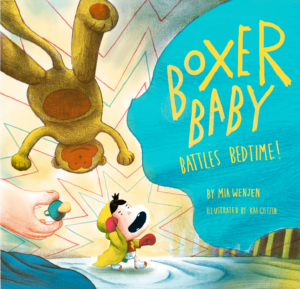 Amazon /Signed or Inscribed by Me
Amazon /Signed or Inscribed by Me
Food for the Future: Sustainable Farms Around the World
- Junior Library Guild Gold selection
- Selected as one of 100 Outstanding Picture Books of 2023 by dPICTUS and featured at the Bologna Children’s Book Fair
- Starred review from School Library Journal
- Chicago Library’s Best of the Best
- 2023 INDIES Book of the Year Awards Finalist
- Green Earth Book Award longlist
- Imagination Soup’s 35 Best Nonfiction Books of 2023 for Kids
Amazon / Barefoot Books / Signed or Inscribed by Me

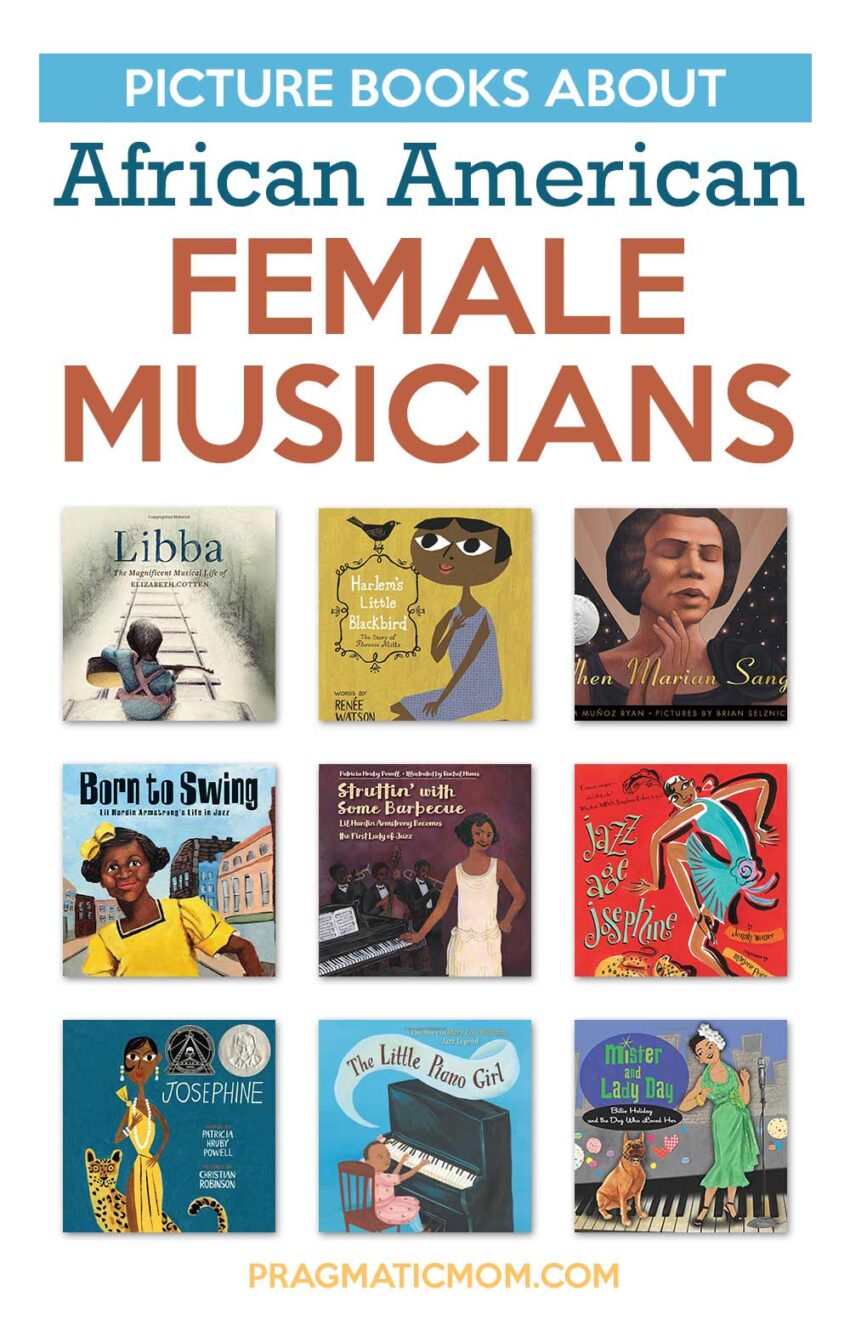
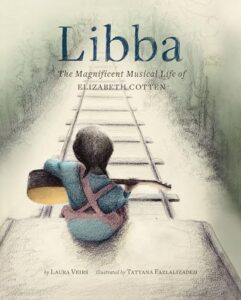
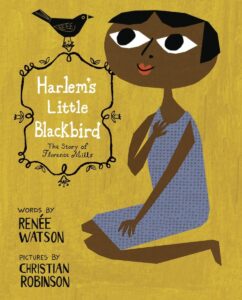
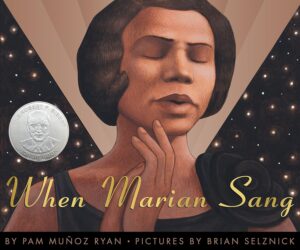
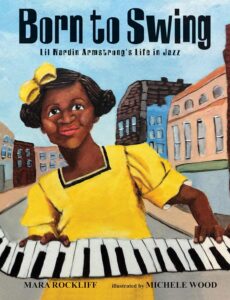
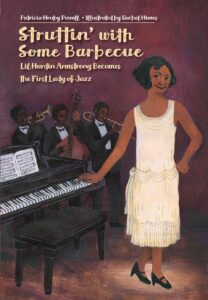
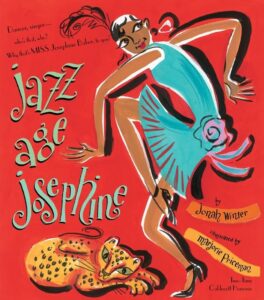
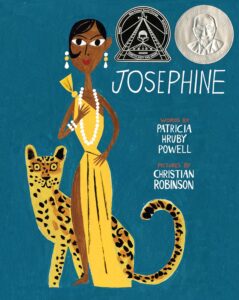
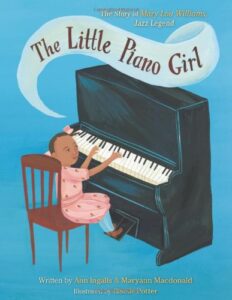
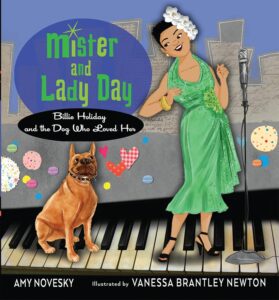
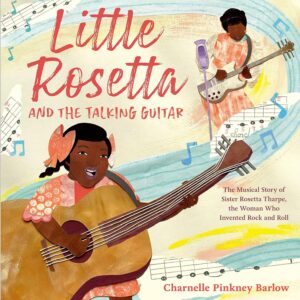
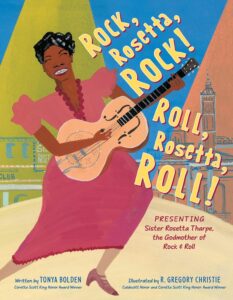
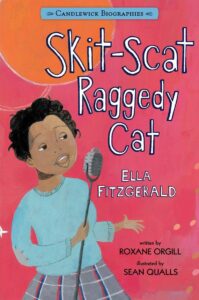
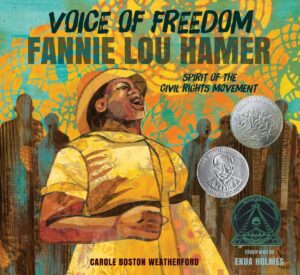
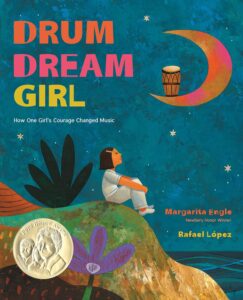
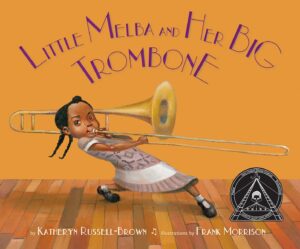
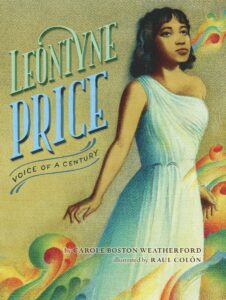
















This is great, Mia! I love Josephine and Christian Robinson’s art is just perfect for it! Thanks for introducing me to Harlem’s Little Blackbird–Christian’s style is unmistakable.
I also just read Mister & Lady Day–an interesting angle to take for Billie Holiday.
Will have to read When Marian Sang!
Hi Maria,
Glad you liked the list!!! What amazing talent they all possessed. It’s strange and sad that some are not well known today.
Sujari Britt is such a joyful cellist! Incredibly inspirational – thank you for introducing me to her!
You featured several of my favorite musicians here. African American musicians have had a huge influence on the entire music scene.
Hi MaryAnne,
My middle daughter likes watching YouTube videos on prodigies and she told me about her. What a terrific talent Sujari Britt is! I know that you have a cellist in the family too!